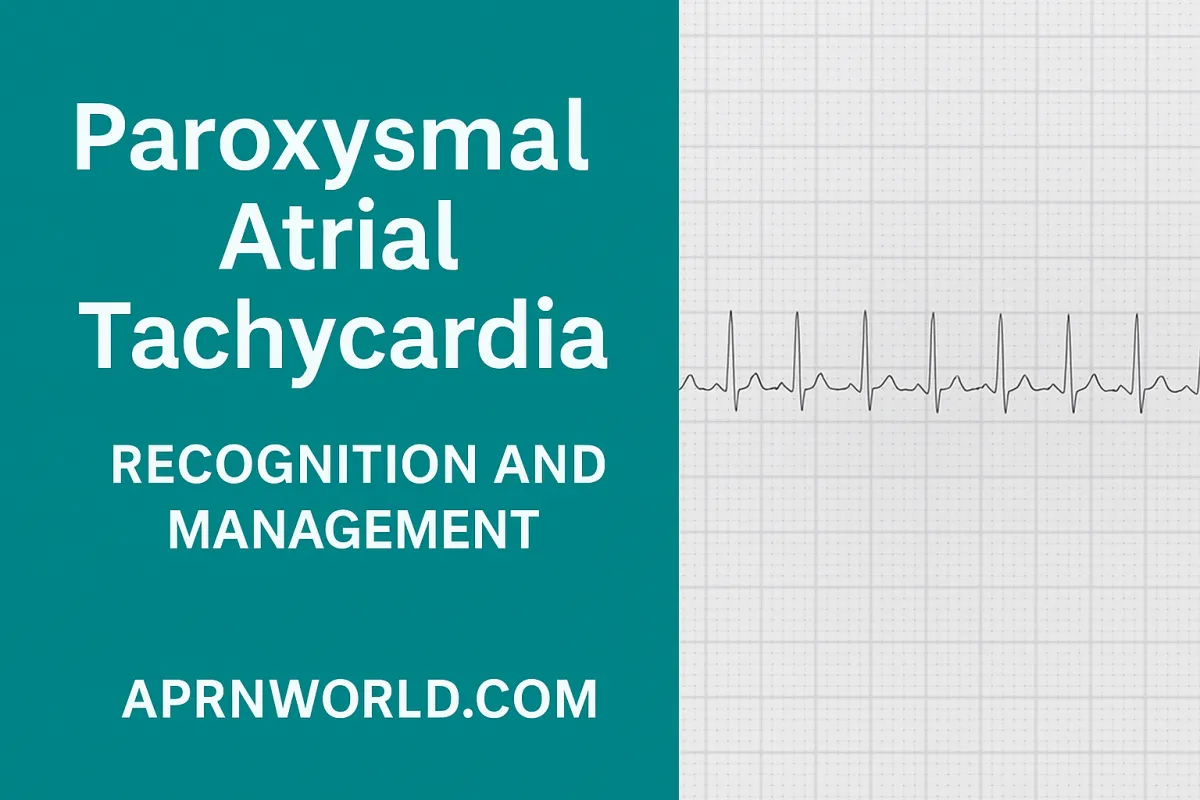
Paroxysmal Atrial Tachycardia: Causes, Symptoms, and Management
Introduction
Paroxysmal Atrial Tachycardia (PAT) is a type of supraventricular tachycardia (SVT) characterized by sudden episodes of rapid heart rate originating from the atria. While these episodes often start and stop abruptly, they can cause significant symptoms and impact a patient’s quality of life.
At APRNWORLD.com, our Arrhythmia Recognition and ECG Interpretation Courses equip healthcare professionals with the skills to identify, interpret, and manage arrhythmias like PAT effectively.
Causes of Paroxysmal Atrial Tachycardia
Enhanced automaticity in atrial tissue
Triggered activity from afterdepolarizations
Reentry mechanisms in the atria or AV node
Common triggers: caffeine, alcohol, stress, electrolyte imbalance, digitalis toxicity, hyperthyroidism
Symptoms
Patients may experience:
Sudden onset of palpitations
Rapid heartbeat (usually 150–250 bpm)
Shortness of breath
Chest discomfort or pressure
Lightheadedness or dizziness
Fatigue
Diagnosis
ECG: Narrow QRS complexes with regular rhythm, abnormal P-wave morphology depending on origin
Holter monitoring for intermittent episodes
Event monitors or implantable loop recorders for infrequent symptoms
Management of PAT
Acute Episodes:
Vagal maneuvers (Valsalva, carotid sinus massage – if no contraindication)
Adenosine IV (first-line in stable patients without contraindications)
Beta-blockers or calcium channel blockers for rate control
Chronic/Preventive Treatment:
Antiarrhythmic medications (Class IC or III agents, as appropriate)
Catheter ablation for recurrent, drug-resistant PAT
Addressing underlying causes (electrolyte correction, medication review)
Why ECG Training is Important for PAT
PAT can mimic other supraventricular arrhythmias, and misinterpretation may lead to delayed or inappropriate treatment. APRN WORLD’s courses teach:
Differentiating PAT from atrial flutter, AVNRT, and sinus tachycardia
Understanding electrophysiologic mechanisms behind PAT
Case-based practice for accurate diagnosis
📍 Enroll now at APRNWORLD.com










